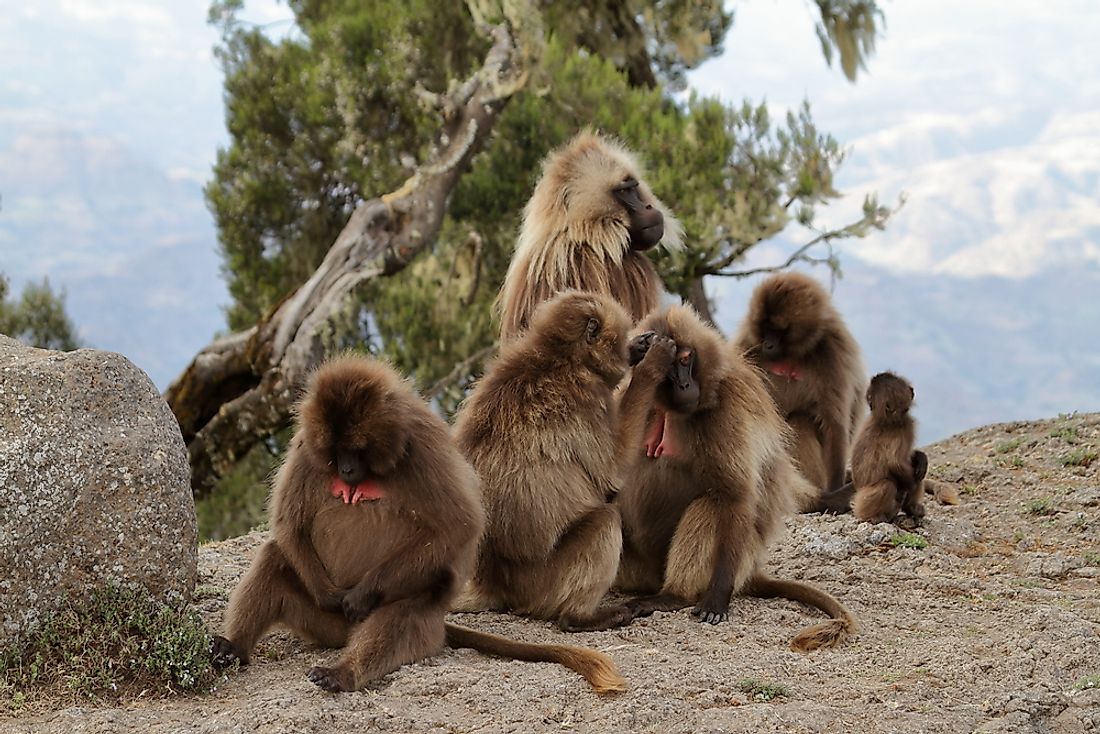Baboon - Unique Animals of the World

Baboons are some of the largest primates belonging to the Papio genus. They are made up of five species which include olive, chacma, guinea, hamadryas, and yellow baboons. Baboons are old world monkeys, which primarily dwell on the ground. Their bodies are covered with thick fur for adults with the muzzle and buttocks being bare. Males are generally larger than females. They grow to weight up to 100 pounds. Unlike new world monkeys, baboons have short non-prehensile tails that they use for balance. Baboons have doglike muzzles with closely set eyes.
Social Behaviour
Baboons are social animals living in troops of about 50 members with some having up to 250 members. Within their social groupings, baboons display a lot of friendliness through acts such as helping in caring for the young, grooming, sharing food, and protecting each other from predators. Social groups of the baboons consist of both males and females with some males acting as the dominant party. Females tend to stick to the groups they were born into while males move from one group to the other after attaining sexual maturity at about 8 years. Young ones of about the same age may play together and sometimes will play with other primates like the chimpanzee.
Communication
Baboons are intelligent animals with various communication skills including a variety of vocalizations, hand gestures, and facial expressions. They have unique communication patterns which are also noticeable in humans such as maintaining eye contact. Baboons may use several yawns to communicate within themselves or scare away enemies by displaying their large canines. From the communication patterns between various members of groups, baboons are able to establish the social structure and dominance within the group.
Habitat and Diet
Baboons are native to Africa and Arabia. They prefer open savannah grasslands, hills, and others occupy semi-desert areas. Their high adaptability allows them to live in tropical forests. Baboons spend most of their time on the ground moving about on all fours and climbing on trees at night to rest. They are omnivores with their diet mainly leaning towards herbivorous. Baboons feed on grasses, roots, insects, fruits, seeds, bark, birds, domestic animals like sheep and goats, and fish. Sometimes, baboons may hunt animals like antelopes.
Reproduction
Mating and reproduction vary in the species. In most of the species, however, males mate with any female within the troop. A female may have more than one partner. When on heat, the female presents her swollen and reddened rump to a male. The gestation period lasts for six months. Single births are the most common among baboons although rare cases of twin births are recorded. Females primarily care for young ones although males may care for young ones to win the favor of a female. Sometimes, females within the group help in caring for young ones of other females. Males fighting for dominance or a certain female may kill the young ones to mate with the female.
Threats
Although the baboon is classified as a least concern mammal, it faces several potential threats. Some of these threats include habitat destruction and fragmentation through human activities such as settlement and agriculture, hunting down of baboons in areas near human settlements, and their extensive use in research laboratories. Baboons also face threats from their enemies including lions, the stripped hyena, cheetahs, and the leopards.











